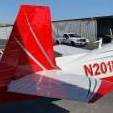Flying during smoke and fires
-
Members Online
- Flyler
- Skyhighguy
- Marcopolo
- William Munney
- jsclafani
- Ned Gravel
- dzeleski
- pgray
- Schllc
- Lptoro
- wombat
- RescueMunchkin
- DanM20C
- Niko182
- toto
- Rick Junkin
- Sheriff23
- squawkvfr
- TheAv8r
- MCDsiena
- Jason_Cincy
- CAV Ice
- DonMuncy
- ElkoRandy20J
- Utah20Gflyer
- ohdub
- Joe Linnebur
- Ron McBride
- Marc_B
- Andy95W
- Mooney in Oz
- 7.Mooney.Driver.0
- TheSoup
- Jaystew324
- Skyland
- donkaye
- Fix
- WS6mro
- philiplane


Recommended Posts
Join the conversation
You can post now and register later. If you have an account, sign in now to post with your account.